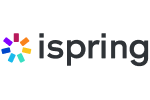The process of purchasing and implementing a learning management system (LMS) for your organization is an exciting time. However, before you can buy an LMS, you need to get buy-in.
In the world of learning and development (L&D), the business case for learning is clear. 90% of organizations are concerned about employee retention, and providing learning opportunities is a leading retention strategy.
As an L&D leader, it’s easy for you to see a clear business case for investment in an LMS. For your C-suite and other decision-makers who may be further removed from the L&D function, you’ll need to prove that this investment will pay off.
Use this resource as a step-by-step guide to build your pitch and to:
- Understand the steps involved in conducting an LMS needs assessment.
- Pinpoint the pain points you want it to solve.
- Identify the metrics that you want to impact.
If you are considering buying an LMS, it’s critical that you know why. You may feel you need one. You may have even been told to go find one. But that’s not enough. When the time comes to actually put the company’s money on the table to pay for one, the scrutiny will begin. Get in front of the questions by executing a learning needs assessment.
A learning needs assessment will give you the answers to why you need an LMS from all perspectives of the business. You’ll uncover data in the process to support these reasons. You’ll use research from external parties and the vendors you are working with to learn about the cost savings associated with an LMS. Pulling this information together will fortify your pitch.
The 5 Steps of an LMS Needs Assessment
- Clearly define goals and objectives.
Before you begin the assessment, ensure you have a clear understanding of the organization’s goals and objectives. This will help you align the assessment with the overarching objectives and ensure that the identified learning needs contribute to the organization’s success.
- Involve stakeholders.
Engage relevant stakeholders such as managers, employees, subject matter experts (SMEs) and executives. Their insights will provide a well-rounded perspective on the skills and knowledge gaps that need to be addressed. Involving stakeholders also increases buy-in and support for the assessment outcomes. Here are 10 simple learning needs questions to ask your key stakeholders:
- What specific skills or knowledge do you feel are important for your role or department?
- What areas do you feel you need additional training or development to perform your job more effectively?
- What new technologies, tools or processes would you like to learn more about to improve your job performance?
- What compliance or regulatory training requirements do you think should be addressed, now and in the future (e.g., new contracts may need new certification)?
- Which soft skills, such as communication, leadership or problem-solving, would like to enhance through training?
- What career development opportunities or areas of professional growth are you interested in pursuing?
- What gaps are there in your current training or development programs that need to be addressed?
- How do you prefer to learn? (e.g., through in-person workshops, online courses, self-paced modules, mentoring, etc.)
- What specific challenges or obstacles do you face in your role where training could provide support or solutions?
- What industry trends, emerging topics or training approaches do you believe should be incorporated into our training programs?
These questions are purposefully open-ended! Try not to change them to allow for one-word answers; you want some free text and open discussion that you need to collate and collect.
- Use a mix of data collection methods.
Utilize a variety of data collection methods to gather comprehensive information. Methods could include surveys, interviews, focus groups, performance evaluations, and analysis of existing documentation and performance metrics. This multi-method approach helps capture diverse viewpoints and provides a more accurate picture of learning needs.
Using a survey tool is super easy and can get you a bigger audience response. Remember to create an open and supportive environment where employees feel comfortable sharing their thoughts and suggestions.
- Analyze and prioritize findings.
Once you’ve collected the data, carefully analyse it to identify common themes, trends and patterns. Prioritize the learning needs based on their relevance to the organization’s goals, the frequency of occurrence, and the potential impact on performance. Not all identified needs will have equal priority, so focus on those that will yield the most significant benefits.
- Consider individual, team and organizational levels.
Learning needs assessments should address needs at different levels — individual, team, and organizational. Individual needs pertain to specific skill gaps employees require for their roles. A team’s needs might involve collaborative skills or communication improvement. Organizational needs could relate to larger-scale competencies required for the organization’s strategic growth.
Remember, a learning needs assessment is an ongoing process. Regularly review and update the assessment results to ensure that learning plans remain aligned with the evolving needs of the organization and its workforce.







